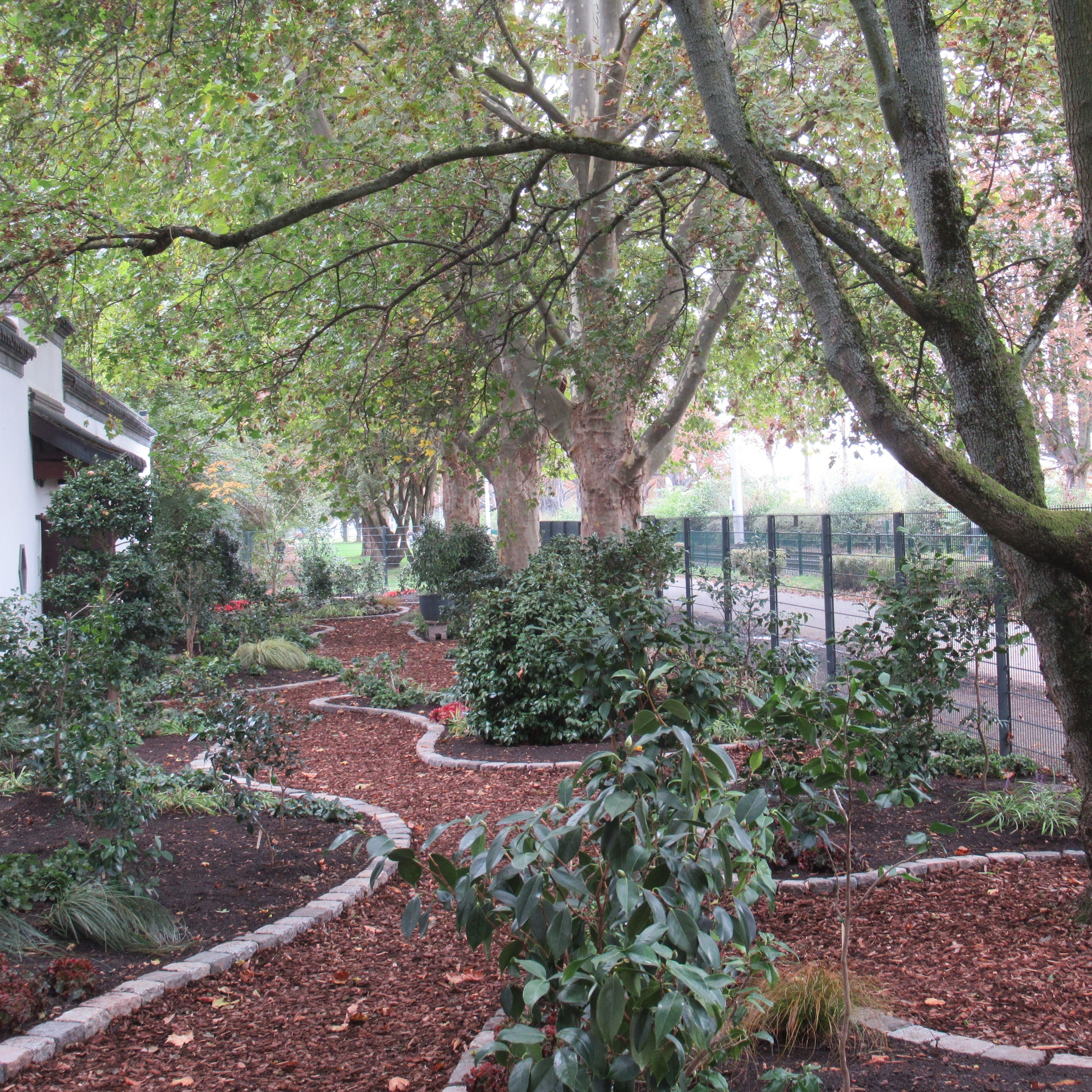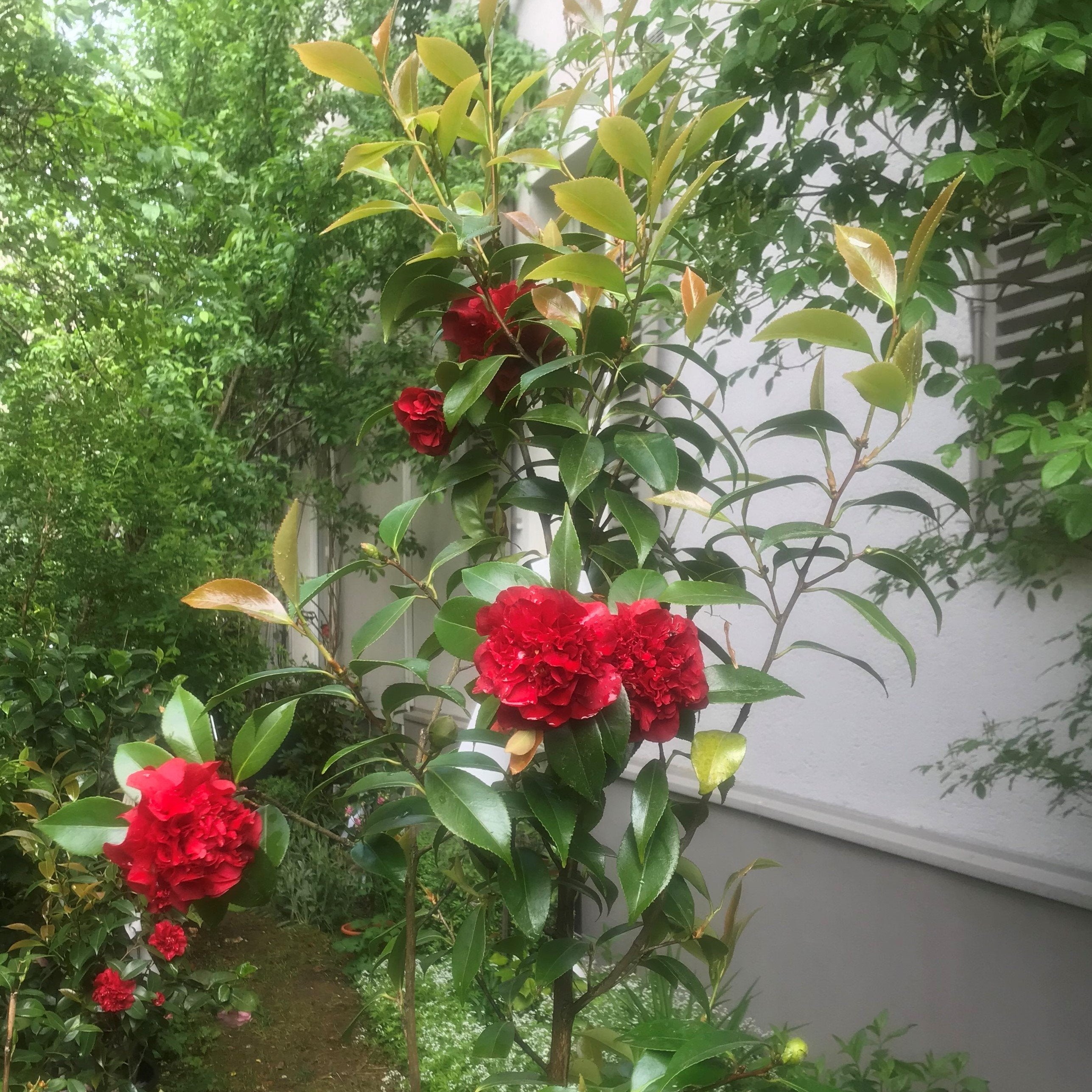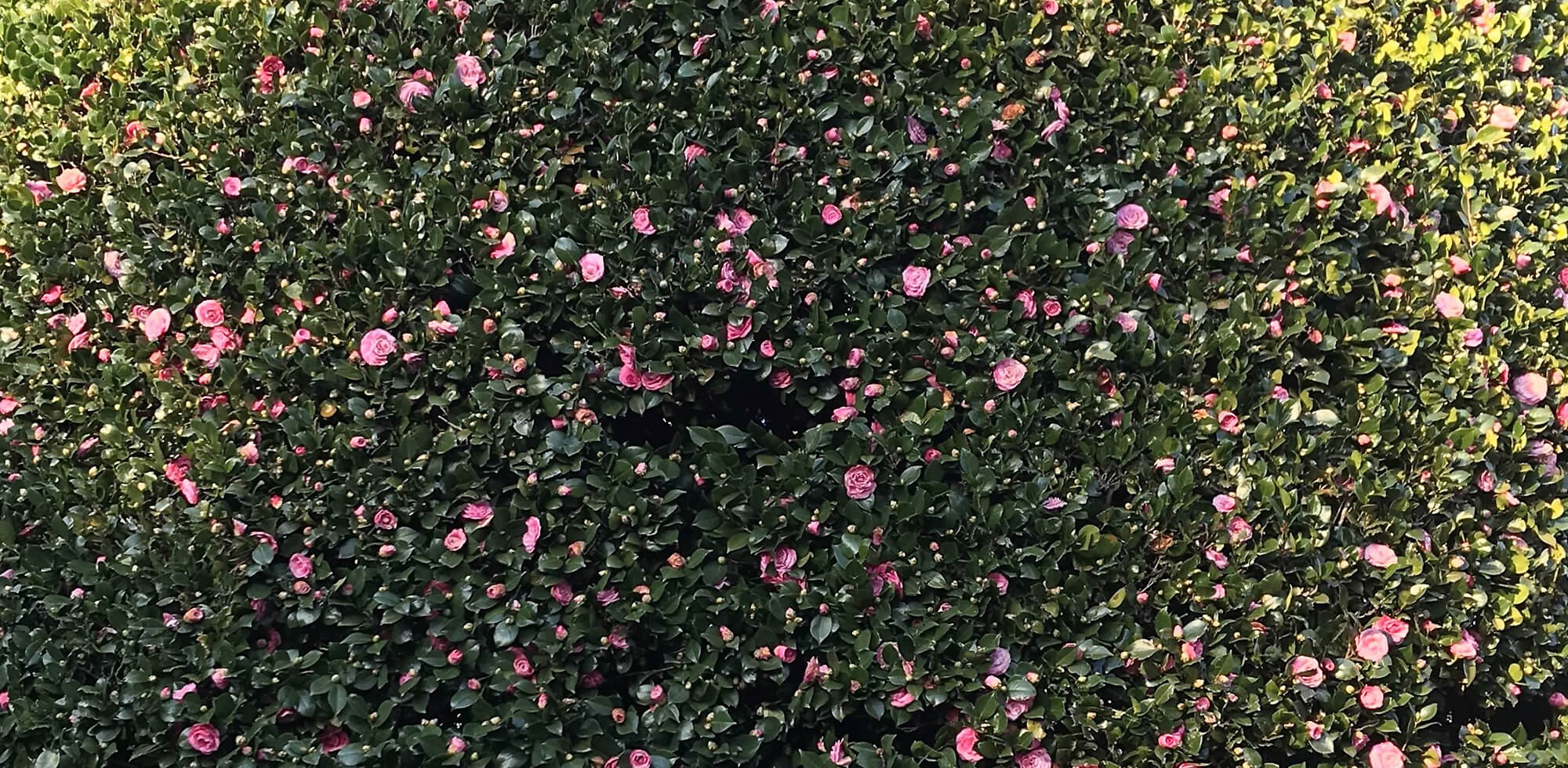The long and warm summer days have benefited the camellias; the buds are already plump, and the first autumn-blooming camellias (C. sasanqua) are showing their flowers. These not only serve as a food source for bees and other insects but also delight us with their earthy fragrance, which fits so perfectly with the autumn season. Would you like to plant one of these beauties now? Then feel free to check out our shop, where we offer a lovely selection of autumn-blooming camellias.
It's now time to start preparing the camellias for winter. In the garden, a thick layer of mulch about 20 cm high made of dry brushwood and leaves will protect the root zone. Feel free to use nutrient-rich, easily decomposing leaves, such as those from hornbeam, but shredded oak leaves, which have an acidic pH, are also suitable. Be sure to leave the trunk exposed to avoid bacterial growth. Fir or spruce branches can be used effectively as sun protection to shield the leaves from the winter sun and drying winds. A young plant that has not yet established itself in the garden requires more care and attention than an older, already established camellia.
For camellias planted in pots, the root ball is best protected by placing the pot on a suitably sized polystyrene board to insulate it from below. Then, wrap it thickly with coconut or reed mats. It is important that the pot is in a wind-protected location. Camellias can easily withstand light frost down to about -5°C, but in lower temperatures, they should be temporarily moved to a cold stairwell or garage. A cool basement can also be used, where the temperature should not exceed 10°C. Heated living spaces are absolutely unsuitable for camellias. They are much more comfortable in the damp, cool weather outside than indoors.
In winter, camellias enter their dormant phase, requiring much less water than in summer. However, watering should not be forgotten: most camellias are more likely to dry out in winter than to freeze.
Cared for in this way, the camellias will reward you with abundant blooms.
The wild form Camellia Oleifera can be seen in the picture




